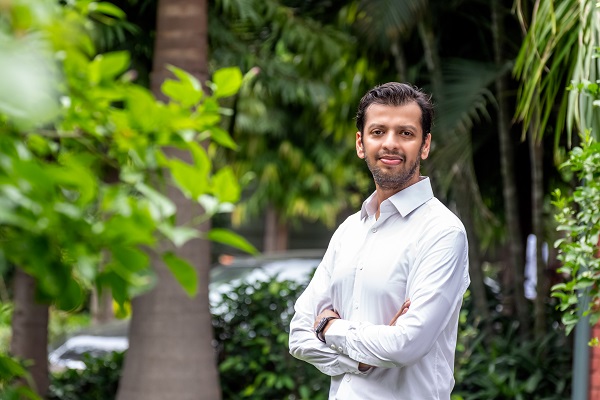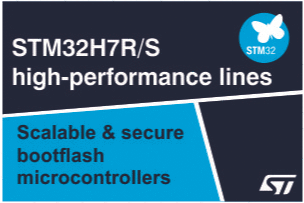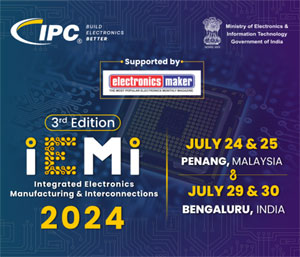
In conversation with Electronics Maker, Abhishek Malik, Executive Director, Calcom Vision Ltd highlights how Calcom Vision is shaping India’s electronics growth story. With a focus on long-term value over rapid scale, the company is investing in R&D, automation, and backward integration to deliver design-led, end-to-end solutions. Leveraging PLI 2.0, expanding LED and smart home portfolios, and driving exports through Calcom Astra, Calcom aims to evolve as a trusted global manufacturing partner.
India’s electronics exports have surged over 40% in FY24, with EMS and ODM players gaining prominence. Where does Calcom Vision see itself in this new wave, and what differentiates your growth model from others chasing scale?
The growth in electronics exports reflects the increasing maturity of India’s manufacturing ecosystem. We see this as an opportunity to strengthen our role as a reliable partner in electronics manufacturing. Our approach focuses on long-term value rather than rapid volume expansion. We aim to build enduring partnerships with OEMs by investing in future-ready technologies, improving internal capabilities, and maintaining high product standards. Our growth strategy balances operational efficiency, supply chain alignment, and R&D-focused product development. This allows us to respond to market changes without compromising on quality or customer expectations.
With the government expanding support under PLI 2.0 and raising investment thresholds, how are you recalibrating your manufacturing strategy? Does this open the door for deeper product diversification or export-oriented growth via Calcom Astra?
PLI 2.0 has given strong momentum to our growth plans. With our recent elevation to the Large Investment category under the PLI Scheme for White Goods, we increased our commitment from ₹10 crore to ₹25 crore and fully deployed it ahead of schedule. This has enabled us to expand our LED manufacturing portfolio across drivers, modules, engines, housings, heat sinks, diffusers, and light management systems, strengthening India’s integrated LED supply chain. We are enhancing digital capabilities, upgrading automation, and increasing annual output while diversifying into adjacent areas such as Solar Lighting and BLDC Fans. At the same time, we are sharpening our export focus through subsidiary Calcom Astra Private Limited, dedicated to steering exports and positioning Calcom as a design-led, globally competitive manufacturing partner leveraging our fully integrated 30,000 sq. meter Greater Noida facility to serve both domestic and international markets.
Global OEMs are now looking at India not just for assembly but for full-stack design and delivery. What capabilities has Calcom built on the R&D and product design front to meet this demand particularly in smart lighting and connected home solutions?
Since its inception, Calcom has always followed an ODM model. We have put design at the forefront of all our developments and built a strong R&D team to align with our business goals. We recognised early on that for India to evolve as a manufacturing hub, it must go beyond assembly and focus on end-to-end product development. Accordingly, Calcom has made structured investments in its R&D infrastructure, including dedicated labs for materials testing, electronics, and optics. Our multidisciplinary engineering teams work on areas ranging from both Electronics and mechanical designing and now even include embedded systems, cloud integration to user interface and experience design. In the smart lighting and connected home space, we have developed proprietary firmware and modular hardware designs to meet specific client needs. These capabilities support smoother collaboration with OEMs through faster prototyping, co-development of solutions, and full lifecycle support from design to mass production. This design-to-delivery capability enables us to respond effectively to both domestic and international market requirements.
Outdoor lighting is a competitive but high-growth segment. What was the strategic thinking behind entering this category, and how are you using backward integration or tech play to compete with larger brands in this space?
Our entry into the outdoor lighting segment was based on an internal assessment of our technical strengths and the growing market opportunity, particularly in the context of urban development and smart city initiatives. We wanted to be a One-Stop-Shop for our customers offering both Indoor and Outdoor Lighting solutions. Backward integration has played an important role in our strategy. By manufacturing key components such as Housings, Lenses and Power drivers in-house, we are able to enhance quality control, improve cost efficiency, and respond to market requirements in a timely manner.
From a technology standpoint, we are incorporating features such as smart controls, adaptive lighting, and remote monitoring to strengthen product competitiveness. These efforts help us address the needs of a market that is both quality-driven and price-sensitive, while maintaining operational agility.
Your JV with Taehwa Techno and collaboration for fan manufacturing mark a pivot into broader consumer hardware. Is this part of a long-term plan to evolve beyond lighting into a full-fledged smart home ecosystem brand?
Our joint venture with Korea’s Taehwa Enterprises to form Calcom Taehwa Techno Private Limited (CTTPL) is a natural extension of our strengths in design-led electronics manufacturing. Through this JV, we are producing advanced, energy-efficient BLDC ceiling fans that deliver up to 55% energy savings, operate seamlessly even at low voltages, and offer enhanced durability with features like remote control capability, high-torque performance, and an advanced Electronic Control System. While lighting remains the foundation of Calcom Vision, our long-term vision is to evolve into a broader smart home ecosystem brand with a portfolio that includes smart fans, IoT-enabled lighting, and other connected, energy-efficient solutions. This pivot is driven both by the rising global demand for sustainable, technology-integrated products and by our ability to deliver them through our fully integrated R&D and manufacturing capabilities in Greater Noida.
Calcom was recently honored by Panasonic with a Platinum Quality Award—no small feat. How has this strengthened your position as a global supply chain partner, and what are the next big targets in terms of global OEM collaborations?
We are honoured to have received the Platinum Quality Award from Panasonic at their Supplier QC Convention 2025, where we were recognised among 122 vendors nationwide and awarded the highest category distinction. This milestone reflects the collective effort and strong quality culture built by our team, reinforcing our credibility as a dependable partner in global value chains. More than just an accolade, it strengthens our positioning as a trusted supplier of energy-efficient and connected solutions for leading global OEMs. Looking ahead, we are actively pursuing collaborations in global markets while staying focused on technology adoption, process optimization, and continuous improvement to meet evolving global requirements.
How do you see the India-UK FTA impacting India’s electronics sector?
The India-UK Free Trade Agreement is expected to provide Indian electronics manufacturers with improved access to the UK market through reduced tariffs and simplified trade processes. This can support companies like us in expanding their reach to European markets by making exports more cost-effective and competitive. The FTA may also create opportunities for deeper supply chain collaboration and broader participation in international value chains.






